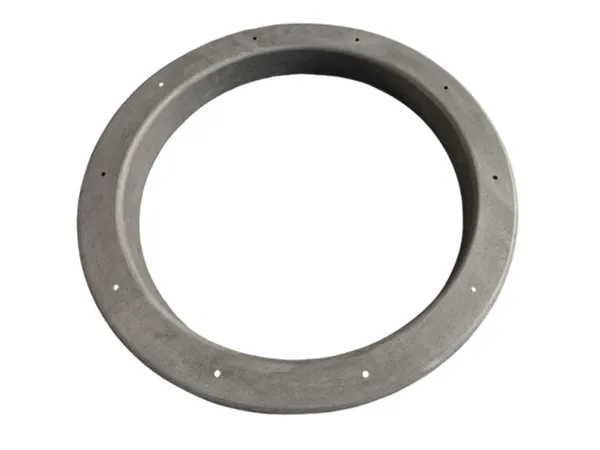Elegir lo correcto graphite ring for high-temperature applications requires careful consideration of several factors to ensure optimal performance and longevity. Aquí hay una guía para ayudarlo a hacer la mejor selección..
Anillo de grafito elija

1. Comprender las condiciones de funcionamiento:
Temperatura: Determinar las temperaturas de funcionamiento continuas y máximas. Los anillos de grafito pueden soportar temperaturas muy altas, but their performance can be affected by the presence of oxygen.
Oxidizing Environments (p.ej., air): The maximum temperature is typically around 450-500°C (842-932°F). Some sources mention up to 650°C (1202°F), but oxidation becomes more significant at these higher temperatures
Steam Environments: Graphite can handle temperatures up to 650°C (1202°F).
Non-Oxidizing Environments (p.ej., vacuum, inert gases): Graphite can withstand exceptionally high temperatures, potentially reaching up to 3000°C (5432°F).
Pressure: Identify the system’s operating pressure. Higher density graphite rings offer greater pressure resistance and can handle pressures exceeding 300 bar (around 4350 psi).
Los medios de comunicación: Determine the chemical compatibility requirements. Graphite generally offers excellent resistance to a wide range of media, including hot water, steam, hydrocarbons, quimicos, and solvents, across a broad pH range (0-14). Sin embargo, it’s not suitable for strong oxidizing agents.
Velocidad (for dynamic applications): If the ring will be used in rotating equipment, consider the shaft speed. Different graphite grades and ring densities may be recommended for various speed ranges.
Static or Dynamic Application: Rings for static applications (p.ej., gaskets in heat exchangers, bridas) and dynamic applications (p.ej., sealing in pumps, válvulas, compressors) might have different design considerations.
2. Consider the Material Properties of Graphite:
Purity: Higher purity graphite (higher carbon content, typically >98%) generally offers better sealing efficiency, resistencia a la corrosión, and oxidation resistance. Nuclear-grade graphite with even higher purity is available for critical applications.
Densidad: Density affects the ring’s strength, pressure resistance, and sealing capability. Higher density rings (p.ej., 1.8 g/cm³) are suitable for higher pressures. Common density ranges are 1.3 a 1.8 g/cm³.
Ash Content: Lower ash content indicates higher purity and can be important for certain sensitive applications.
Sulphur, Chloride, and Fluoride Content: Low levels of these impurities are crucial to minimize corrosion, especially in steam and water environments. Good quality graphite should have sulphur content below 300-500 ppm, and chlorides and fluorides below 50 ppm (industrial grade) o incluso 20 ppm (nuclear grade).
…
More detailed information on how to select the right graphite ring for high temperature applications can be found at: https://www.czgraphite.com/a/news/graphite-ring-choose.html


